Complaint for poor service letter template
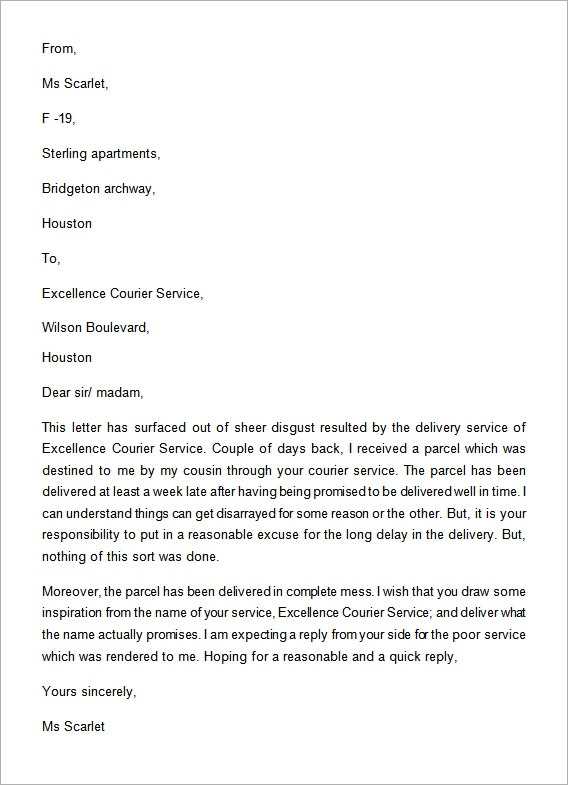
Clearly express your dissatisfaction by addressing the issue directly. Begin with identifying the service or product that did not meet expectations, providing details of the interaction that left you dissatisfied. It is important to specify the exact nature of the problem to help the recipient understand your concern fully.
Next, explain the impact this poor service had on your experience. Whether it caused inconvenience, disappointment, or additional frustration, be precise about how it affected you. This helps set the tone for a constructive conversation and shows the gravity of the situation.
In your letter, make sure to request a specific resolution. State clearly what you expect as an outcome, whether it’s a refund, an apology, or another form of compensation. Keep your tone firm yet polite to ensure your concerns are taken seriously, while maintaining professionalism throughout.
Complaint for Poor Service Letter Template
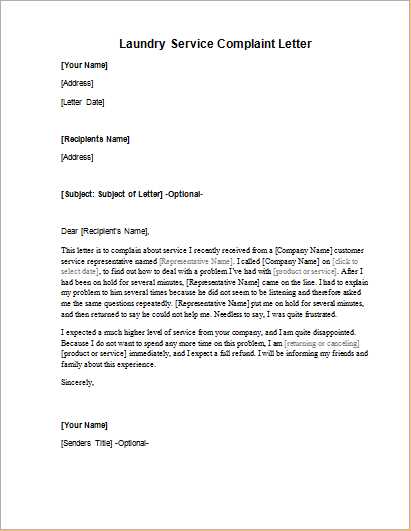
To address dissatisfaction with a service, structure your complaint letter with clarity and professionalism. Start by stating the problem clearly and concisely. Mention the date and location where the service was provided, and provide a brief description of the issue. If relevant, include any supporting documents or evidence that highlight the shortcomings.
Be specific about the issue. Describe what went wrong in detail, avoiding generalizations. Highlight any specific interactions, behaviors, or actions that led to dissatisfaction. Focus on facts and avoid unnecessary emotional language.
State your expectations. Clearly explain what resolution you seek. Whether it’s a refund, replacement, or another form of compensation, being specific will help the recipient understand your expectations. Aim for a fair solution while maintaining a professional tone.
Request a timely response. Set a reasonable deadline for the company to respond to your complaint. This will demonstrate your commitment to resolving the issue promptly while giving them time to investigate and address the situation.
Be polite but firm. While expressing dissatisfaction, maintain a courteous tone. Aggressive language or threats will only hinder the possibility of a positive outcome. Respectful communication can often lead to quicker and more satisfactory resolutions.
Follow up if necessary. If you do not receive a response within the specified time frame, send a follow-up letter. Reference your original letter and reiterate your concerns, while maintaining professionalism throughout the process.
How to Begin Your Complaint Letter
Begin your complaint letter by clearly stating the issue. Start with a concise sentence that explains the problem you experienced. Include the date, time, and location of the service if relevant, as this helps provide context for the situation. Avoid unnecessary details that don’t directly relate to the complaint.
Be Specific About the Issue
Describe the specific problem you encountered. For example, if you received poor customer service, mention what was lacking in the interaction, such as delayed responses, rude behavior, or mistakes made by the staff. This helps pinpoint what went wrong and makes it easier for the recipient to address the issue.
Provide Any Supporting Details
If applicable, include any documents or evidence that support your complaint, such as receipts, photos, or screenshots of communication. This strengthens your case and makes it more credible. Mention that you have attached the documentation without overloading the letter with too much detail.
| Information to Include | Details |
|---|---|
| Issue Description | Clearly explain the problem in a few sentences. |
| Date/Time | Provide the exact date and time of the service. |
| Location | Specify where the incident occurred if relevant. |
| Evidence | Include supporting materials like receipts or screenshots. |
Describing the Issue You Encountered
Be direct and clear when explaining the issue. Start by stating the exact problem you faced, including relevant details such as dates, locations, and any interactions you had with the service provider. Provide a specific example of how the poor service affected you or your experience. For instance, mention delays, errors, or lack of communication that hindered your expectations.
For example: “On January 15th, I was scheduled for an appointment at your location. However, despite arriving on time, I waited for over 45 minutes without receiving any update or explanation. This resulted in my inability to attend other commitments I had planned for that day.”
Next, outline any attempts you made to resolve the situation. Highlight whether you communicated with the service team and describe their response, if any. Clearly state what you expected from them and how their actions (or lack thereof) did not meet those expectations.
Example: “I approached a staff member for assistance, but they were unable to provide an estimated wait time or apologize for the inconvenience caused.”
Presenting Evidence to Back Your Claims
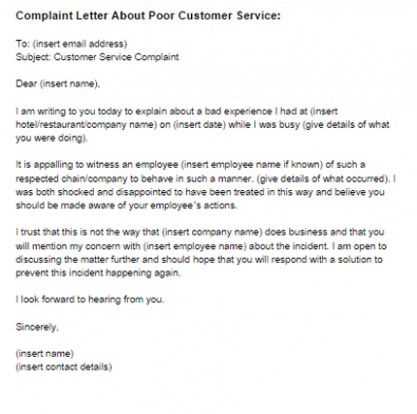
Provide clear, well-documented evidence to strengthen your complaint. Use specific examples and include dates, times, and names of employees involved. This establishes credibility and helps the recipient assess the situation accurately.
- Include emails, receipts, or any other forms of correspondence that confirm your experience.
- If applicable, attach photographs or screenshots to visually support your claim.
- Record the steps you took to resolve the issue before writing the complaint.
Providing Witness Testimony or Statements
Consider submitting statements from individuals who were present during the incident or who can verify your claims. This adds weight to your complaint and demonstrates that your account is credible.
- Ensure the statements are clear, concise, and relevant to the issue at hand.
- Witnesses should be willing to provide contact information if needed.
Proposing a Solution or Desired Resolution
Offer a clear and actionable suggestion to address the issue. State specifically what you expect from the company to resolve the situation. If compensation is necessary, mention an amount or type that would be satisfactory. For example, you could request a refund, replacement, or a discount on a future service. Be precise in what will resolve the problem and make the experience acceptable again. If an apology is required, ask for a formal acknowledgment of the mistake.
Outlining Possible Alternatives
Consider providing alternatives that the company can consider, such as a different product, service, or adjustment. This opens a path for negotiation and shows your willingness to find a mutual solution. If appropriate, suggest ways to improve the overall customer experience in the future. Your goal is to foster a positive resolution for both parties.
Maintaining a Professional Tone in the Letter
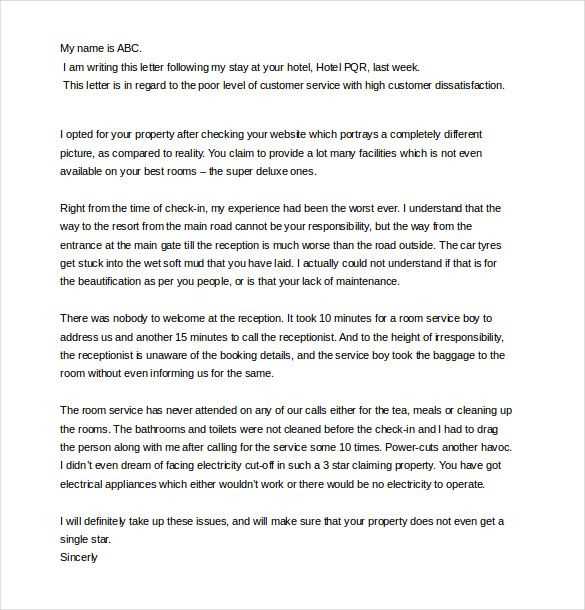
Focus on clarity and politeness throughout the letter. Avoid harsh or emotional language that could escalate the situation. Stick to the facts and describe the issue directly, without exaggeration or inflammatory terms. Being specific about the problem helps the reader understand your concerns without feeling attacked. For example, mention specific dates, events, or actions that led to your dissatisfaction.
Use neutral and courteous language. Express your disappointment, but do so respectfully. Rather than using accusatory phrases, phrase your concerns in a way that encourages resolution. You could say, “I was disappointed to experience…” instead of “You failed to provide…”. This approach fosters an atmosphere of cooperation rather than confrontation.
Always stay polite, even when expressing dissatisfaction. Phrases like “I appreciate your attention to this matter” or “I look forward to a prompt resolution” maintain a polite and professional tone. Closing your letter with gratitude for their consideration keeps the conversation open for future dialogue.
Following Up After Submitting Your Complaint
After submitting your complaint, it’s key to stay proactive. Follow-up actions can ensure your concerns are taken seriously and handled promptly.
Contact the Company Regularly
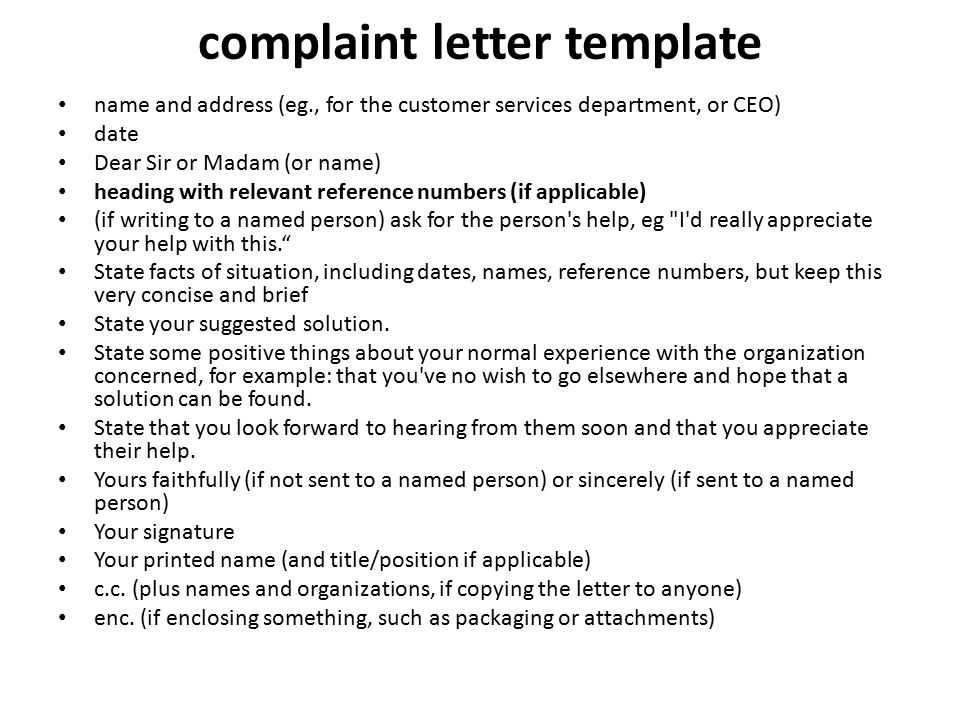
Set a timeline for checking in. If you haven’t received an acknowledgment within a week, reach out. Use the contact details provided in your confirmation letter or email. Keep your tone respectful but firm.
Keep Records of Communication
- Document every interaction you have with the company.
- Save emails, letters, and notes from phone calls.
- Write down any reference numbers or case IDs provided during your follow-ups.
Request Updates on Progress
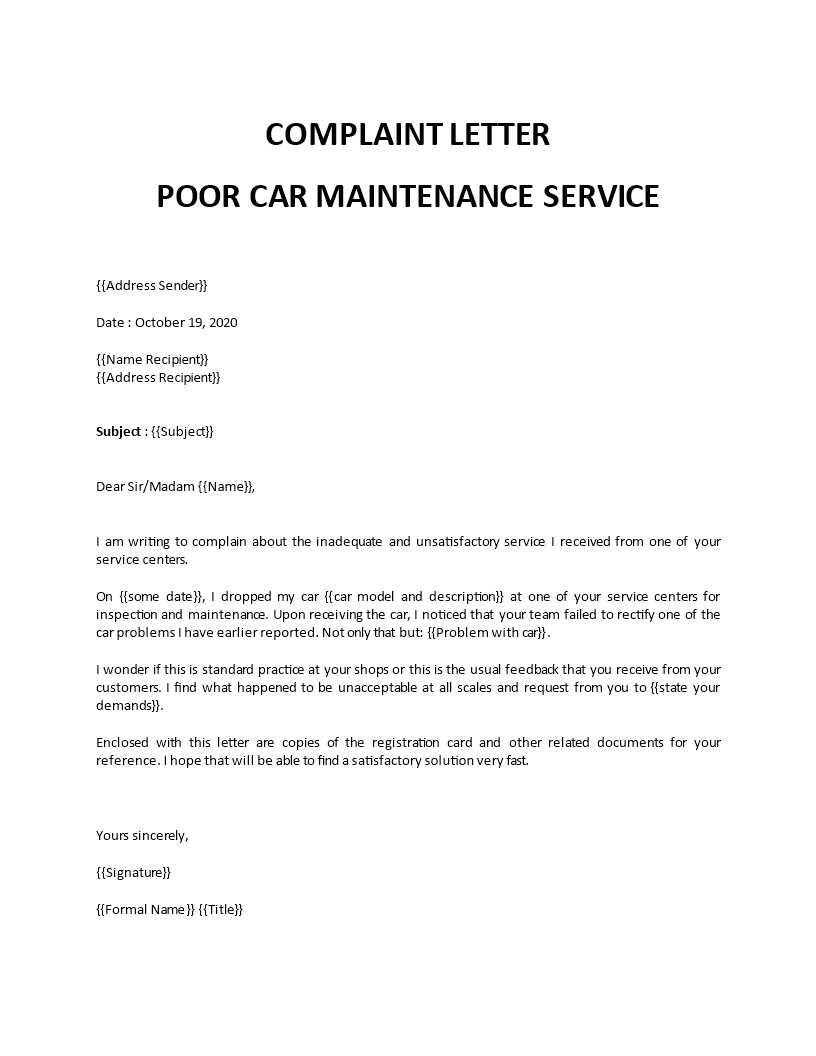
Ask for specific details regarding the resolution process. Inquire about timelines and what steps have been taken since you lodged the complaint.
Be Prepared for Different Responses
- If the company offers a resolution, confirm the details in writing.
- If there is no progress, express your concern and inquire about alternative solutions.
Consistent and clear follow-up can increase the likelihood of a satisfactory resolution.
This keeps the meaning intact while reducing the repetition of words.
Focus on using varied sentence structures and vocabulary to avoid unnecessary repetition. Instead of repeating the same words, replace them with synonyms or restructure the sentence to convey the same idea differently. For example, if you’ve used the word “service” multiple times, consider substituting it with “assistance” or “support” in appropriate contexts.
Rephrase for Clarity
Rewriting sentences in different forms can help keep the reader engaged. For example, instead of saying, “The service was slow, and the service was poor,” rephrase it as, “The service was slow and unsatisfactory.” This method reduces redundancy while maintaining the original meaning.
Use Pronouns and References
Pronouns like “it,” “they,” or “this” can serve as effective substitutes for frequently repeated nouns. For instance, instead of saying, “The customer service was disappointing. The customer service lacked attention,” you can say, “The customer service was disappointing and lacked attention.” This keeps the meaning intact and prevents overuse of the same phrase.